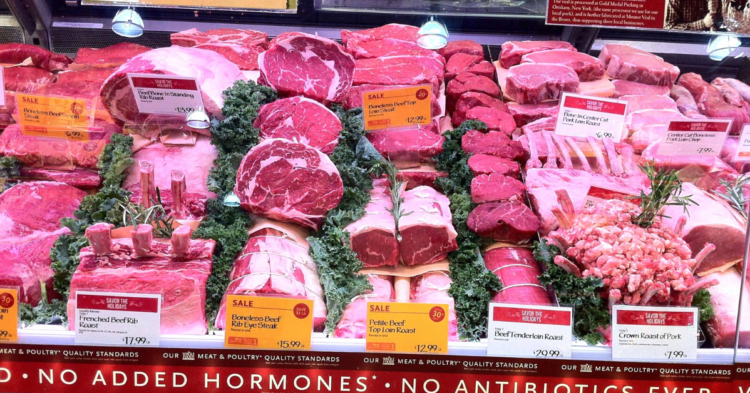Have you ever wondered about the true cost of your food? And by true, I mean a cost that accounts for the effect producing the food has on the environment. A new study published in Nature Communications explored this question.
They compared the climate cost of animal-based farming (meat), to dairy and vegetable farming. They found that if we accounted for the larger climate costs, meat should cost us much more than we currently pay.
A large problem with a market economy is that it is governed by supply and demand, not true cost.

This means that the true cost of sustainable production is not accounted for and prices are distorted. What if companies were penalized for polluting by government policies?
If they had to pay the true cost of production, it would incentivize sustainable practices. However, this would mean the true cost of production would be passed on to the consumer. So, how much would be have to pay for our food?
The study estimated the cost of production based on standardized costs of greenhouse emissions.

The cost estimates are based on the cost of greenhouse related damage. Currently, the cost of greenhouse gasses is $181 per tonne of emissions. Because the cost of emissions is based on damages produced, the cost varies and is continuously recalculated.
For example, in 2010, they were as low as $80 per tonne. Whereas by 2050, the cost is expected to climb to $400 per tonne.
It is difficult to quantify the emissions of farming.

Some practices such as rotting or burning plant waste produces emissions, whereas farming can also help capture carbon in soil. So, calculating costs have to factor in both carbon production and reduction.
A large factor in animal-based farming is the amount of feed need to produce the food. For example, to produce 1kg of beef, you need 43kg of feed. In comparison, a broiler chicken only requires 2.3 kg of feed per kg of meat.
But in a lifetime, a cow or chicken can produce a much larger weight of eggs or milk than meat. So, animal by-products are inherently better for the environment than meat. But these costs still outweigh the cost of vegetable production.
A complication to this is organic farming.

Organic plant-production does not use fertilizers, so it is far more sustainable than non-organic farming. And these benefits can be passed on to animal production. Organic meat, eggs, and milk, must use organic feed. So, organic animal products have much lower emissions.
Organic regulations also often stipulate that animals must have a certain area of land available to them. Fewer animals per acre allows their waste to be absorbed by the soil, capturing the carbon. Factory farms have no such benefits. Small organic farms also tend to be close to their customers, unlike large factory farms. This means they also have less emissions from transportation.
When you factor all of this in, it appears the cost of our groceries are out of whack.

If we account for the real cost of production, animal by-products should cost more. However, organic products should cost less than non-organic products. And mass produced meats should cost the most. How would those prices change your shopping habits?
Some price increases to consider :
How much are you willing to pay for a better tomorrow?

















































